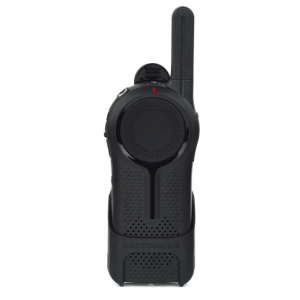Important Features to Consider While Buying a Two-Way Radio
What if your colleague is awaiting your response and your two-way radio runs out of battery all of a sudden? This is a common situation one may face if they ignore what features they’re opting for while buying.
Two-way radios are an indispensable tool by providing instant and reliable communication, and if you are looking to buy one, consider the features mentioned in this blog to save your money for the long run.
Battery Life
One of the most crucial factors to consider is battery life. You can choose rechargeable batteries as they are economical and environmentally friendly. They often do a better job than disposable batteries. Take power-saving features into account and choose a battery with a high mAh rating for more usage time.
Some radios offer power-saving or auto-shutdown features for extended battery life. You must be investing in two-way radios that can run for at least 10 to 12 hours.
Sound Clarity
The microphone and speaker quality matter to keep the communication going without interruptions. Get one that provides clear and crisp sounds. Try exploring two-way radios with an adjustable volume control and good noise cancellation, as they can be ideal for construction sites or outdoor use.
Moreover, check if the two-way radio can work well in different outdoor environments, from noisy to silent. Another feature you must have is a VOX that allows automatic transmission while you speak. This works when your hands are occupied.
Multiple Channel Support
What to do when you have to send a message to many people at once? That is why a two-way radio with multiple channel support is required. It has multiple channel options while maintaining the privacy of your messages. This saves both your time and effort and keeps your tasks ongoing seamlessly.
To support this feature, some two-way radios are equipped with sub-channels and privacy codes to increase your privacy. Channel scanning is another important feature that lets you scan for active channels automatically. It can help you find a clear path to effective communication.
Signal Strength & Range
Know what you need before making any choice. A basic user may need a range of 2 to 5 km, while professionals’ requirements can go up to 15 km or more. You can choose between UHF (ultra high frequency) or VHF (very high frequency) radio, depending on your needs. UHF works effectively in places with obstacles like trees and buildings, basically urban areas, while VHF can do better in open areas, like fields and farms.
Check for high-gain antennas to improve both signal and range quality, power output for better transmission range, and a consistent audio quality and clarity.
Compatibility for Accessories
Spending on a two-way radio that is compatible with accessories is a win-win situation, as you don’t know when you might have to add additional equipment. From earpieces for hands-free communication, extra batteries for long-time usage, or charging docks, these accessories increase the efficiency of your two-way radios and make them even more useful.
Professional two-way radio users may also need car mounts and belt clips for additional convenience and accessibility. Some radios also allow antenna upgrades for improved signal strength.
Size, Weight, and Design
While functionality matters a lot, the physical dimensions of your two-way radios can also make a huge difference. A heavy two-way radio can be a burden to carry, while a non-compatible design is enough to give a rough time at work.
Opt for radios with ergonomic designs. They offer comfortable grips and intuitive button layouts for your ease of use and reduced hand fatigue, even if you use them for longer hours. Other considerable features are shorter antennas, as they are portable. Display features like backlit LCD screens and status indicators can help in low-light conditions.
Motorola DLR1060 Digital Business Two-Way Radio

Motorola DLR1060 Digital Business Two-Way Radio can end your search for a high-quality yet affordable two-way radio. It is a lightweight and sleek transceiver radio that offers clear audio quality, along with durable construction, extended battery life, and a private calls feature.
Conclusion
Two-way radios have come a long way, becoming much more advanced over time. Many advanced features are now available, and it’s important to consider them when buying a new radio so you don’t end up wasting money on outdated features. Whether you need a radio for work or travel, these modern features will always make communication easier and more reliable.



